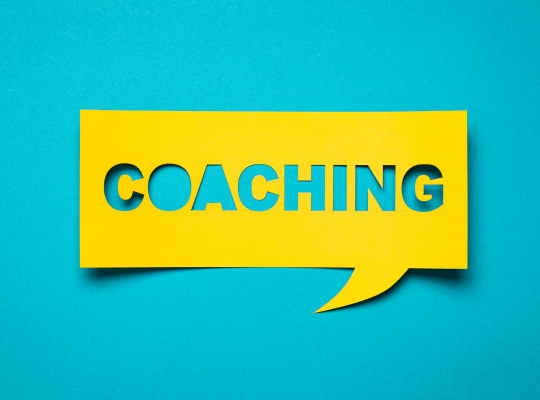Coaching is one of the potent tools under CXOs, senior leaders, and executives. It’s like having a personal guide who helps you along in your career challenges and acquiring skills to reach your goals. In this blog, we will look at some benefits associated with coaching and what difference it brings to senior leaders.
What is Coaching?
Coaching involves:
- Engaging a professional who assists one in describing their goals.
- Clearing out the stumbling blocks in the way.
- Working to their best potential.
For CXOs and senior leaders, coaching involves exploring the development of leadership capabilities, strategic thinking, and personal growth.
Benefits of Coaching to CXOs and Senior Leaders
Greater Self-Awareness
Coaching gives senior leaders a finer grasp of their strengths, weaknesses, and style of leadership. For example, the CEO may realize that they need help with delegation. With this knowledge, they can start working at effective delegation, which will lead to a more powerful team with improved productivity overall.
Improved Leadership Abilities
Frequently, leaders need to work on their leadership skills to serve their teams in the best possible ways. Coaching brings tools and techniques to develop qualities such as empathy, decision-making, and conflict resolution. For example, a CFO may look forward to coaching in order to be better at handling pressure situations, thereby making more balanced decisions.
More Confidence
It helps a leader gain confidence in one’s abilities. Leaders are able to do things better and inspire teams once they are more confident. An example would be the CMO, who is skeptical about making some presentations of new ideas to the board; he can leverage coaching in order to build his presentation abilities and develop confidence in talking.
Better Communication Skills
Good senior leaders must be effective communicators. One way to increase this in the area of senior leaders is coaching them to speak well and to listen better. As an example, a CTO could use coaching to acquire skills in communicating with lay people on technical issues relevant to the organization.
Strategic Thinking
Coaches help leaders develop strategic thinking, that is, from seeing the big picture to being able to project how events and situations may evolve to think strategically in decision-making. A COO is working with a coach on a strategic plan to scale operations while dealing with day-to-day problems.
Problem-Solving Improved
Senior leaders often have complex problems and require creativity for solutions. Coaching develops one’s problem-solving skills through new perspectives and approaches. For instance, a CHRO might engage a coach in dealing with employee retention problems and initiate creative solutions for improving the work environment.
Stress Management
The roles of leadership can be stressful, and the management of stressors is important in maintaining well-being and performance. Coaches help leaders develop ways to handle stress. A CEO, for example, could resort to coaching to learn techniques for managing stressors in the midst of making high-stakes decisions while retaining a balance between work and life.
It is important to maintain a good balance between work and life if one wants to achieve long-term success. Coaching helps senior leaders learn to set boundaries and prioritize the use of their time. For example, a chief product officer might use coaching to find ways to balance their demanding work schedule with personal time and family commitments.
Conflict Resolution
These techniques and strategies cannot only be applied to resolve leadership issues but also to handle conflicts within the team or even with any partners in the business. For example, a CLO may engage a coach to enhance skills in negotiation and dispute resolution.
Goal Setting and Achievement
Coaches help leaders create achievable, clear plans that have goals and back those up with an action plan to achieve those goals. This enables the leaders to maintain focus on where they want to go and make measurable progress toward their objectives. For instance, a CSO may wish to increase the company’s reach in new markets using coaching to set goals and a road map for how to do so.
Examples where Coaching Worked
Case Study 1: The Transformational CEO
A technology startup CEO, Sarah, needed help with delegation and communication. Coaching helped her learn to lean on her team more and articulate her vision. Her team was highly engaged, and the company noticed a huge shift in productivity and employee satisfaction.
Case 2: Balanced CFO
John works as a CFO for a big corporation. He feels overwhelmed by his position’s responsibility. He was coached to develop further his techniques for managing stress and strategies for a better work-life balance. He learned new ways of managing his workload and became more focused with less stress.
Case Study 3: The Confident CMO
Emily was a diffident lady, a potential CMO for an upcoming firm while making presentations in front of the Board about new marketing strategies. The coach helped her to build strong presentation skills and belief in herself. Thus, she could communicate much better to the Board, who extended greater support and successfully implemented her marketing plans.
Conclusion
Coaching builds benefits for a CXO and a senior leader in enhanced areas of self-awareness, better leadership capabilities, improved communication, and stress management. With good coaching, leaders learn the right skills to tread through challenges and are better placed to work towards organizational goals and manage the organization’s well. If you are an advanced leader wanting to improve your performance and growth, consider the exploration of coaching, which is a very valuable investment for career and personal development.







